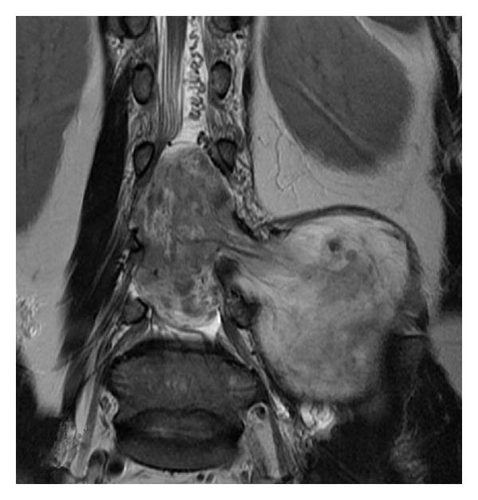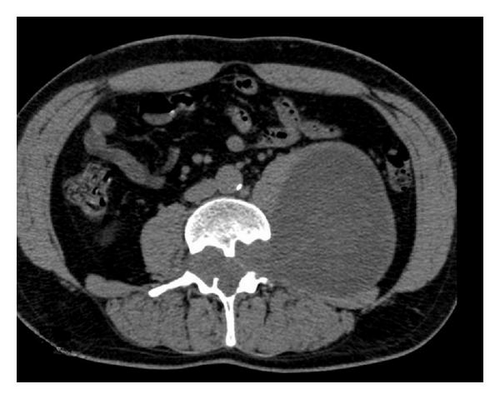Giant Schwannoma with Endoabdominal Development: A Case of Radiculopathy
Abstract
Lumbosacral radiculopathy is a very common pathology, frequently caused by degenerative spondyloarthropathies. However, radiculopathy may result from tumor in various locations within the spinal canal, more commonly extramedullary. Primary nerve root tumors are a rare cause of lumbosacral radiculopathy. The majority of primary spinal tumors are benign and slow growing, and their clinical manifestations may be difficult to distinguish from more common causes of radiculopathy, such as a disc herniation. To our knowledge, voluminous schwannomas with endoabdominal development have only rarely been observed. Lumbosacral radiculopathy is a common neurological syndrome which can be an important source of disability. Although the most common causes are disc herniation and chronic spinal arthropathy, physicians should be mindful of other causes, including neoplasms.
A 62-year-old man was seen by our group for the lower back pain, irradiated to the left leg down to the sole. The onset of these symptoms dated back to when the patient was 60 years of age. He had received conservative treatment with traction and stretching exercises, with partial benefit. The days before coming to our Unit have been characterized by severe back pain and numbness of left posterolateral thigh and leg, not responsive to the nonsteroidal anti-inflammatory therapy. On examination, left foot drop was the salient clinical feature, with associated sensory symptoms involving the anterior-medial thigh and knee with knee jerk depressed. Weakness of ankle dorsiflexion, foot dorsiflexion, and toe extension and flexion was also observed suggesting a multiradiculopathy.
The remaining physical and neurological examinations were normal. Electromyography examination confirmed left multiradiculopathy (L3, L4, L5, and S1). The MRI of the spine revealed a voluminous endoabdominal mass with apparent origin within spinal canal involving the L4 nerve root (Figure 1(a)–1(d)). The patient was therefore operated by a transabdominal/transperitoneal approach and subsequently with laminectomy spine operation with total resection. Histology of the mass was consistent with schwannoma. The postoperative course was normal and no recurrence of schwannoma on MRI of the spine was detectable six months after the operation. Lumbosacral radiculopathy is a very common pathology, frequently caused by degenerative spondyloarthropathies [1]. However, radiculopathy may result from tumor in various locations within the spinal canal, more commonly extramedullary [1]. Primary nerve root tumors are a rare cause of lumbosacral radiculopathy. The majority of primary spinal tumors are benign and slow growing, and their clinical manifestations may be difficult to distinguish from more common causes of radiculopathy, such as a disc herniation. Both are characterized by back pain; however, the nature of pain related to tumor is distinctive, as it becomes increasingly severe over time and is worse when lying down, often interfering with sleep.




Primary tumors which can cause lumbosacral radiculopathy are frequently neurofibromas and ependymomas. More rarely schwannomas, meningiomas, lipomas, dermoids, and lipomas [2, 3].
To our knowledge, voluminous schwannomas with endoabdominal development have only rarely been observed [3, 4]. Lumbosacral radiculopathy is a common neurological syndrome which can be an important source of disability. Although the most common causes are disc herniation and chronic spinal arthropathy, physicians should be mindful of other causes, including neoplasms.




